Ever wonder about the nutritional value attached to the miso soup you are served before your sushi course at Japanese restaurants? Or what the actual miso part of the soup is? Here’s your ultimate guide to what miso is, it’s nutritional value, health benefits and some creative recipes!
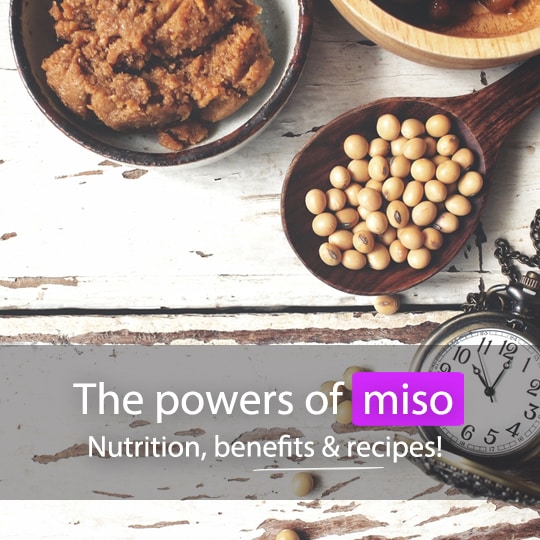
What Is Miso?
Most people would know of miso as that soup you get before your sushi at a Japanese restaurant. The actual miso part of the soup is, in fact, a paste, which is made from fermenting soy beans with barley or rice malt. The fermentation is caused by a mixture of salt, water and a fungus. Traditionally, the paste is used to thicken the Japanese soup you might be familiar with, and often comes with tofu chunks and/or vegetables. However, miso is not just for soup! Being a strong flavor, it is quite versatile and can be used in a number of dishes. For example, as a meat or vegetable glaze, or a thickener in sauces or stir fries.
There are three types of miso – shiromiso, akamiso and awasemiso, which translate to white, red and mixed. White is not fermented as long as the other two, which creates a milder tasting flavor. Red has a longer fermentation period and is saltier than white, giving it a much stronger flavor. And mixed is, unsurprisingly, a combination of the two! It has a relatively strong taste and is dark in color.
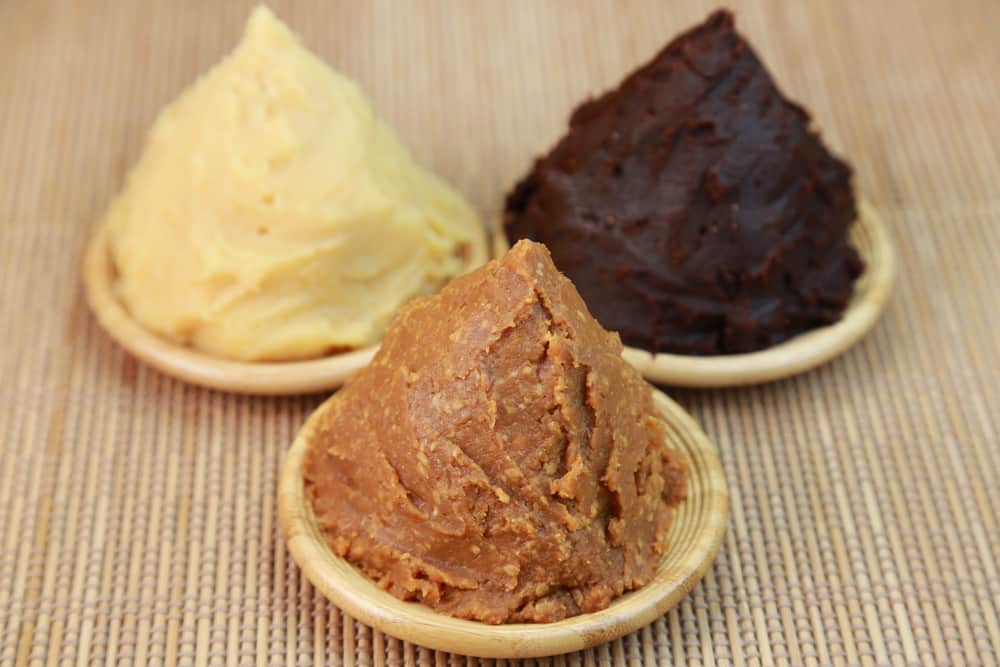
Nutritional Information (100 grams)
Calories – 199
Carbohydrates – 26.5 grams
Dietary Fiber – 5.4 grams
Sugars – 6 grams
Total Fat – 6 grams
Protein – 12 grams
Calcium – 6% of RDI
Magnesium – 12% of RDI
Iron – 14% of RDI
Phosphorus – 16% of RDI
Potassium – 6% of RDI
Sodium – 155% of RDI
Zinc – 17% of RDI
Copper – 21% of RDI
Manganese – 43% of RDI
Selenium – 10% of RDI
Vitamin A – 2% of RDI
Vitamin K – 37% of RDI
Thiamin – 7% of RDI
Riboflavin – 14% of RDI
Niacin – 5% of RDI
Vitamin B6 – 10% of RDI
Folate – 5% of RDI
Vitamin B12 – 1% of RDI
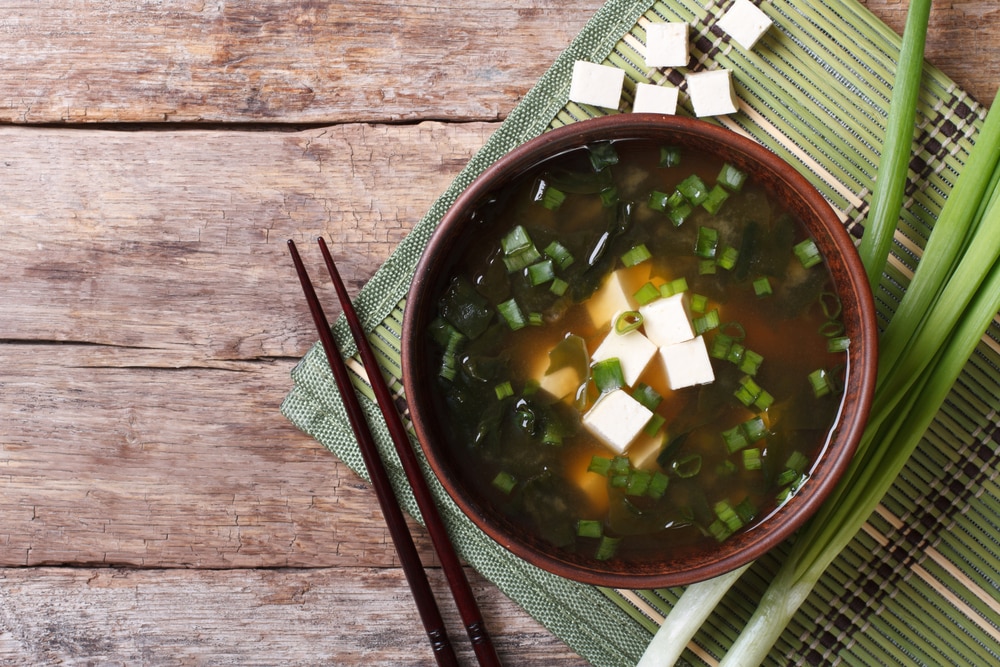
A Brief History Of Miso
Miso dates as far back as the 4th Century BC in China. It originated as a seasoning called Hisio, which was made by fermenting soy beans, wheat, alcohol and salt. Miso was introduced to Japan by Buddhist monks in the 7th century. From there, it became a vital part of the samurai diet and eventually became a widespread staple in Japanese dining.
Health Benefits Of Miso
Miso is a powerful ingredient that only needs to be used in small amounts to reap the health benefits of its concentrated nutrients. Here are some of the main benefits of miso…

Miso Is A Good Source Of Protein
Miso is a rich source of protein, with 12 grams in every 100. The protein comes from the soy in the miso, which is the main ingredient in the paste. Soy is also a vegan source of protein, which is great for vegans and vegetarians, who can’t get their daily dose from meat products. Protein is an essential nutrient that builds muscles and fills you up. It is, in fact, the major structural component of cells, responsible for building and repairing tissues in the body. It is therefore essential to repair muscles following exercise, for example. When consumed as food, protein is broken down into amino acids, which are then used as building blocks for the protein in your body.

Miso Is A Good Source Of Vitamins And Minerals
As well as protein, miso is high in some vitamins and minerals, including copper, manganese, phosphorus, vitamin K, magnesium, iron and zinc. Each of these nutrients play an important role in everyday health. Copper, for example, is an essential trace mineral found in the liver, brain, heart, kidneys and muscles. It increases the absorption of iron and is an ingredient in the production of skin. Manganese is important for healthy bone structure and metabolism. Phosphorus also maintains strong bones. It is a necessary mineral for body detoxification through waste and aids effective metabolism. Phosphorus helps balance the body’s pH and improves digestion.

Vitamin K helps control blood clotting and is important for bone health. It assists in preventing heart disease and reducing neural damage. Magnesium has a number of powerful health benefits. It helps increase energy, eases anxiety and nervousness, aids digestion, eases muscle aches and spasms and regulates calcium, sodium and potassium levels. Magnesium also reduces symptoms of headaches, may help prevent osteoporosis, and is important for a healthy heart. Iron plays an extremely important role in the production of red blood cells and hemoglobin. It helps metabolize proteins and reduces the risk of anemia and fatigue. And finally, zinc supports healthy immune and digestive systems. It helps control diabetes, reduces stress levels and improves metabolism. Zinc also aids with wound healing and weight loss, and improves night vision and hair health.
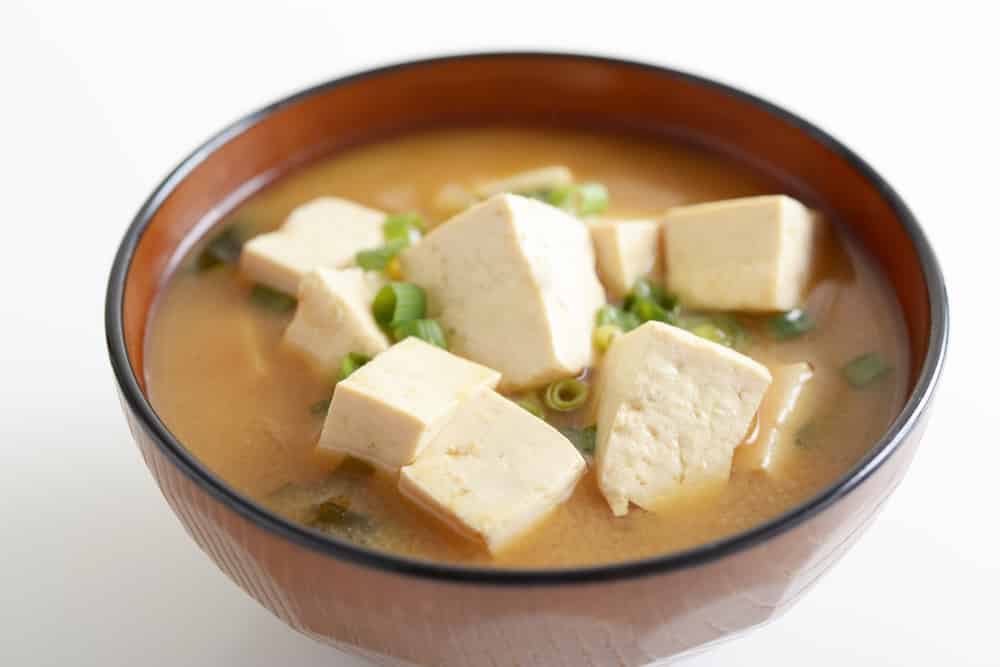
Miso Is Good For The Gut
Miso is a fermented food, and its health benefits are largely thanks to that process. During fermentation, the natural bacteria and yeasts begin feeding on the food’s sugar and starch, turning the microorganisms in the sugar and starch into lactic acid. That process creates powerful enzymes, including the beneficial bacteria, probiotics. This helps to heal a range of health issues, including problems with digestion. It also aids the body in absorbing and using nutrients. Probiotics keep your intestinal flora healthy and are particularly beneficial to gut health. They work by protecting your stomach and intestinal lining while reducing inflammation.

The Main Concerns
Like many foods, there are pros, cons and varying views about whether the benefits outweigh the potential hazards. For example, miso is high in salt. It is also a soy product, which is a topic of controversy. Once touted as the ideal protein source for vegetarians (as mentioned above), more and more researchers are finding soy is not quite the miracle food we once thought. Unfermented soy has been linked to digestive problems, weak immune systems, PMS and allergies, to name just a few of the potential risks of consuming the vegan protein food. Fermented soy products, on the other hand, have been scientifically proven to have health benefits.
However, regardless of the fermentation process, soy products are largely produced from genetically modified soybeans. It can therefore be difficult to find organic miso, but not impossible. But, despite any of those potential problems, miso is such a strong, pungent product that you would never consume too much of it in a day. Therefore, the amount of salt in miso, for example, shouldn’t be an issue.

Miso Recipes
We’ll take a look at the classic soup recipes first, but that’s not all! There are plenty of creative and delicious ways to use miso paste, which we’ll get to shortly…
Miso Soup Recipes
Cold Infused Dashi Miso Soup – Dashi is the classic soup that miso paste is added into to make the traditional miso soup you would usually get at Japanese restaurants. It is a stock that is made from kelp, a type of seaweed harvested from the ocean, along with dried bonito fish flakes and water. This recipe also calls for dried shrimp, kombu, and, of course, miso paste.
Miso Soup With Tofu & Shitake Mushrooms – This is a great classic-with-a-twist miso soup recipe that includes a valuable explanation of how to cook miso, preserving its health benefits. The recipe calls for ginger, tofu, rice wine or sherry vinegar, tamari, shitake mushrooms, chili, gochugari, water, miso paste, dried seaweed and sesame seeds.
Quick & Easy Creamy, Spicy Miso Ramen – This is accurately described by the blogger as instant noodles made fancy! It’s not quite a traditional soup, but it does include a recipe for homemade broth, which is the soup bit! Ingredients include miso paste, red pepper paste, dashi stock, unsweetened soy milk, garlic, soy sauce, sesame oil, an egg, green onions and ramen noodles.
Corn & Miso Soup – This perfectly balanced soup has just the right amount of savory flavors, saltiness and sweetness with a little spicy kick! It is simple to make, calling for corn, vegetable stock, butter, onion, white miso paste, salt, pepper and chili oil. The perfect winter warmer!

Vegetable-Based Miso Recipes
Roasted Butternut With Miso & Garlic – This is an example of using miso as a flavoring or ingredient in something other than traditional soup. It adds a delicious strong savory flavor to a naturally sweet vegetable. The recipe calls for butternut squash, garlic, miso paste, honey, extra virgin olive oil, sesame oil, dried chili flakes, sesame seeds and fresh coriander.
Miso Aubergine Dip – This nutritious vegan dip is perhaps an interesting and very creative take on baba ganoush, with a miso twist. Aubergine is another word for eggplant, so that is the main ingredient in the dish. Along with that, the recipe calls for sesame oil, white beans, like cannellini, butter or haricot, miso paste, white sesame seeds, tamari, chili oil and black sesame seeds. It’s the perfect moreish dip to enjoy with vegetable sticks!
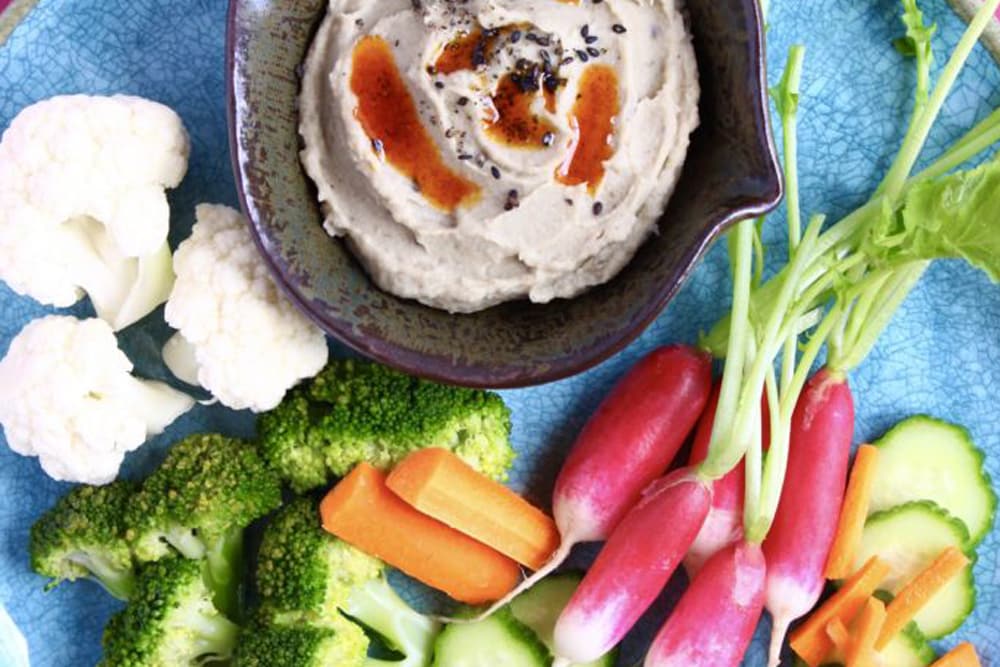
Other Miso Recipes
Sourdough Bruschetta With Cherries – This colorful, striking take on bruschetta is a sure winner at your next dinner party! It’s an example of miso being used as a dressing. This recipe includes three stages – making the dressing, preparing the seed and nut mix, and then making the bruschetta. However, it is still an extremely quick and easy process! For the miso dressing, you need extra virgin olive oil, rice vinegar, white miso paste, mirin and pepper. The seed and nut mix calls for blanched hazelnuts, white and black sesame seeds, and pumpkin seeds. And for the bruschetta, you need sourdough bread, ricotta cheese, sweet cherries, rocket leaves, nasturtium leaves, salt and pepper!
Miso Mango Chicken Salad Cabbage Wraps – Now here’s a way to spice up your boring chicken salads! Again, miso is the delicious, salty, savory ingredient that really makes the flavor of the dish. The recipe calls for cooked chicken, mango, green onions, white miso paste, garlic, coconut milk, salt and pepper, honey, cilantro, sesame oil or olive oil (make sure it’s extra virgin), orange juice or lime juice, cherry tomatoes, watercress, and cabbage leaves.
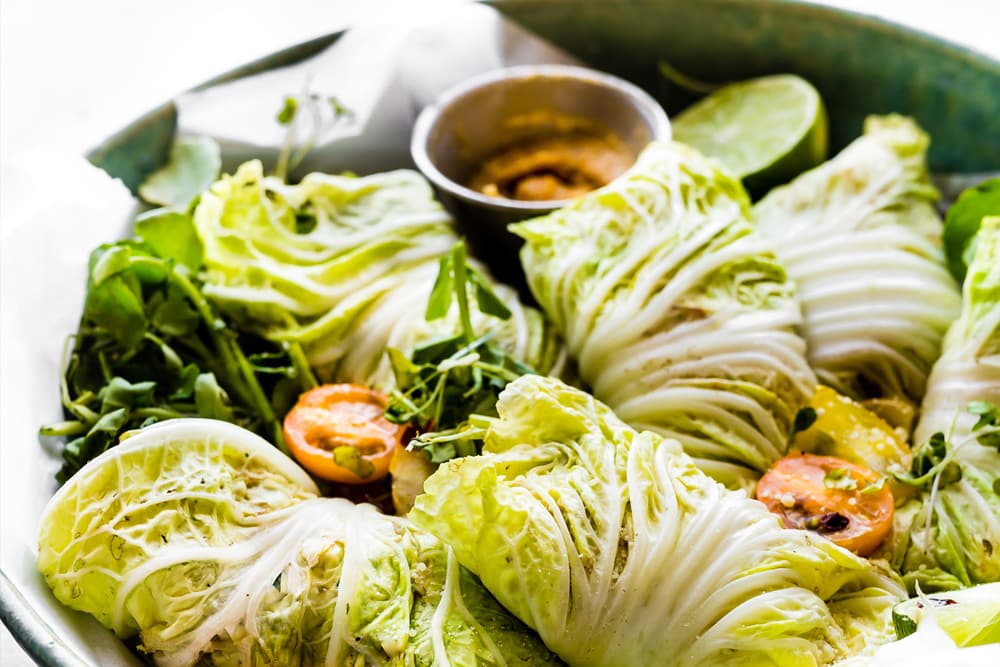
Furikake Popcorn With White Miso Butter – This is not your average popcorn! You can make your next movie night a little bit fancier with this different salty-tasting irresistible homemade popcorn. The recipe calls for unsalted butter, white miso, ginger, scallions (spring onions), popcorn kernels, olive oil (go for extra virgin), and furikake. Furikake is made with sesame seeds, seaweed, salt, sugar and dried fish flakes. It is a Japanese flavoring most often used in rice, fish and pickles.


